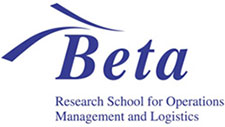Parallel Sessions
Session 8: Data Analytics – Chair: Frank Thuijsman
Rob van der Mei (Centrum Wiskunde & Informatica) – Saving lives with data analytics and optimization
In emergency situations, ambulance providers need to respond to requests for ambulances to quickly provide medical aid and transportation to a hospital. It is of utmost importance that ambulances reach emergency locations within a short period of time. Therefore, it is crucial to position ambulances throughout the region such that they occupy good locations with respect to expected demand. Moreover, it is important that a good distribution of vehicles is maintained when ambulances become busy. Hence, modern ambulance providers tend to relocate idle ambulances in order to achieve short response times: the time between the emergency call and the arrival of the ambulance at the emergency scene.
Sandjai Bhulai (Vrije Universiteit Amsterdam) – Optimization of the revenue of the New York taxi service
Taxis are an essential component of the transportation system in most urban centers. The ability to optimize the efficiency of routing represents an opportunity to increase revenues for taxi drivers. The vacant taxis cruising on the roads are not only wasting fuel consumption, the time of a taxi driver, and create unnecessary carbon emissions but also generate additional traffic in the city. In this paper, we use Markov Decision Processes to optimize the revenues of taxi drivers by better routing. We present a case study with New York City Taxi data with several experimental evaluations of our model. We achieve approximately 10\% improvement in efficiency using data from the month of January. The results also provide a better understanding of the several different time shifts. These data may have important implications in the field of self-driving vehicles.
Jelle Adan (Eindhoven University of Technology) – Batch scheduling in semiconductor back-end production
Nexperia’s back-end semiconductor manufacturing environment is characterized by a large product and batch size variety, numerous parallel machines with large capacity differences, sequence and machine dependent setup times and machine eligibility constraints. A hybrid genetic algorithm is proposed to improve the scheduling process, the main features of which are a local search enhanced crossover mechanism, two additional fast local search procedures and a user-controlled multi-objective fitness function. Testing with real-life production data shows that this multi-objective approach can strike the desired balance between production time, setup time and lateness, yielding high-quality practically feasible production schedules.
